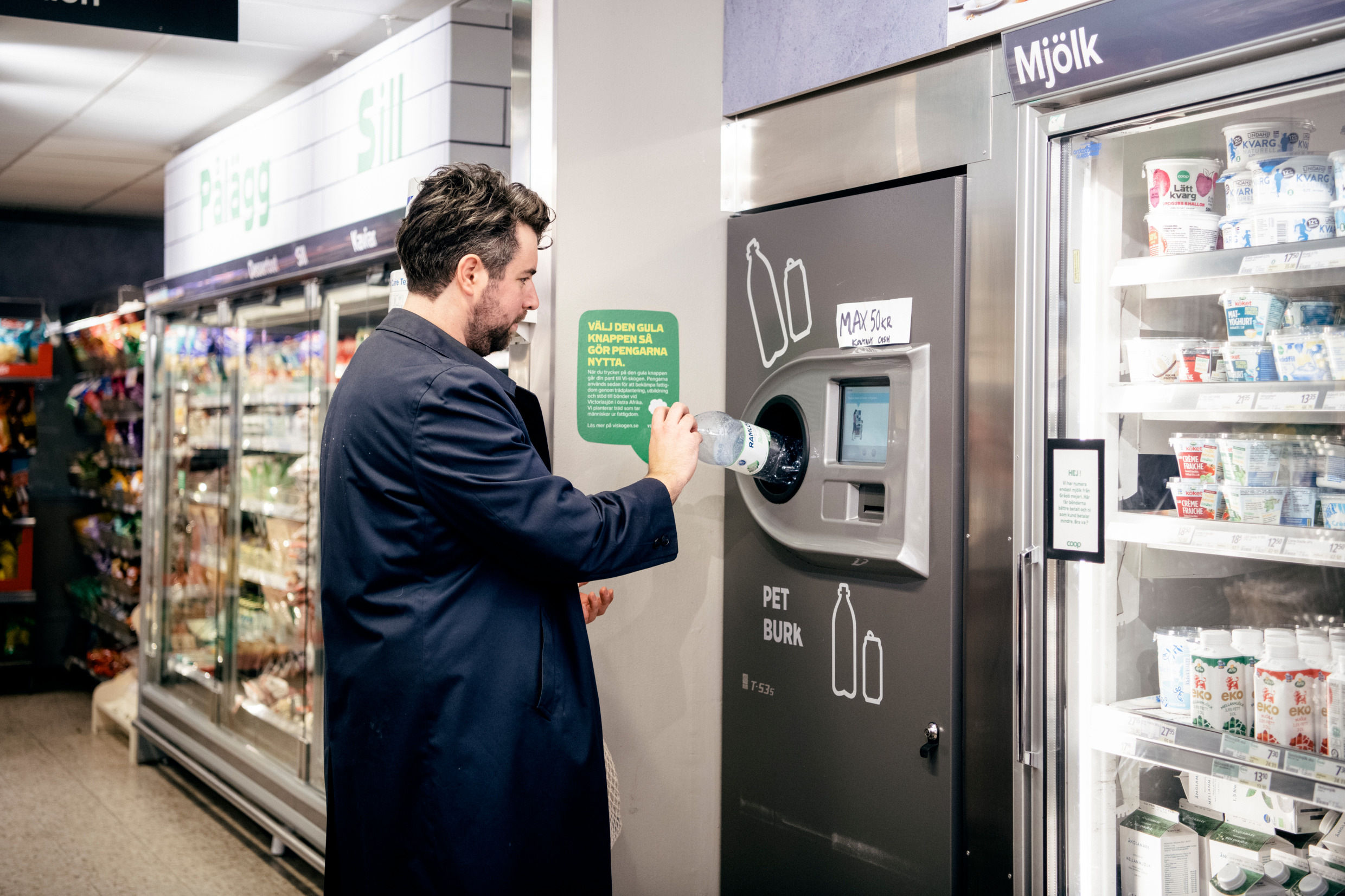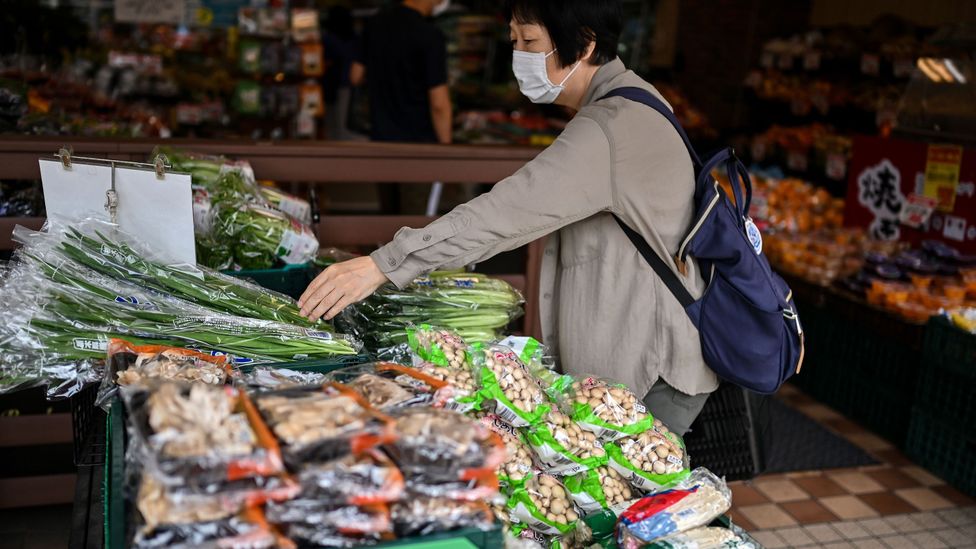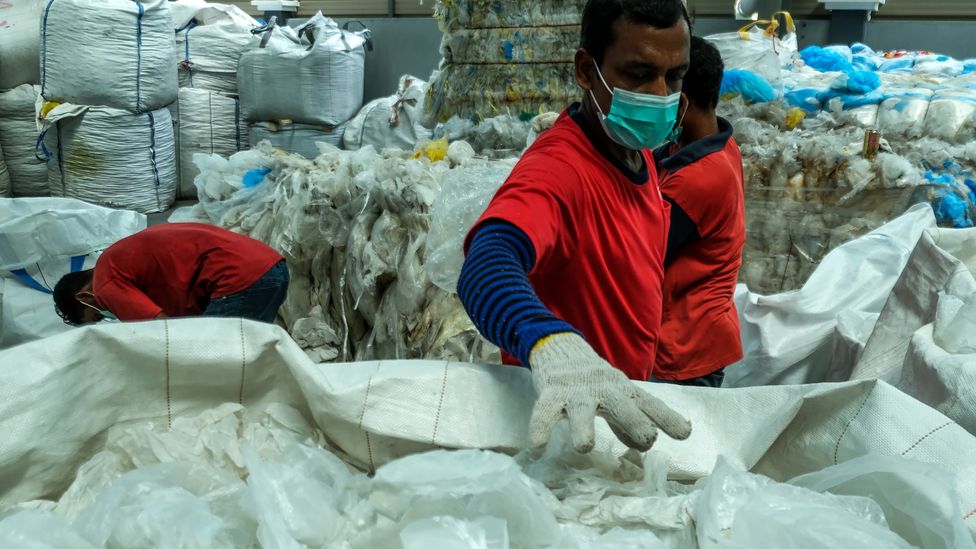
Why are waste bins equipped with e-smart sensor devices
beneficial for the environment? And how do you order a carton of milk on
your phone? Swedish cleantech companies have the answers to these and
other questions. Their technical solutions may be crucial when it comes
to maximizing the sorting necessary to transform waste flows into
resources under a circular economy.
Everyone knows this: many raw materials are finite resources, and
we will need to reuse them many times over if we are to achieve the
goals of the Paris Agreement. Despite this, we still incinerate our
waste, or even worse, bury it in landfills. This is not only a huge
waste of materials but also risks emitting both carbon dioxide and
toxins into the environment and atmosphere.
But today, many simple, technical solutions are available to
facilitate sorting, which is a prerequisite for recycling. An example of
this is an app developed by the Swedish technology company Bower
that makes it possible to redeem the deposit on many different types of
packaging without the need for further investments in infrastructure.
– All that is required is a package with a barcode, a phone and our app, explains Suwar Mert, founder and CEO of Bower.
– No special machines and or extra logistics are needed.

Deposit stations in the Bower app
It works like this: you take the used packaging to a recycling or
environmental station, and the app uses the phone’s navigation system to
verify that you are located at an approved recycling centre. You then
scan the barcode on the packaging and points are added to your account.
Points that can then, for example, be converted into money.
– If the packaging comes from one of our partners, say Unilever,
you are given two points, if it comes from another supplier, you are
given one point. The important thing here is that we accord waste
products a value so that the consumer is incentivized to return rather
than discard them.
But the manufacturer is also granted value, in the form of more data on how consumers use their products.
– The app can also be used to ask consumers questions, allowing the
manufacturer to gain new insights into consumer habits. In addition, our
solution can be installed regardless of the country because it utilizes
the existing infrastructure. This makes it feasible to introduce a
deposit scheme at short notice, thereby increasing sorting and
recycling, in many more places and for a lot more items than previously.
In Sweden, Bowers’ country of origin, recycling stations for glass,
cardboard, plastic packaging etc., are distributed throughout all
municipalities. This means that it is convenient and easy for people to
return packaging for recycling. However, if residents are to be
comfortable using these recycling stations it is necessary that they be
kept clean and tidy. Unfortunately, this is not always the case and
visitors are met with dirt and overflowing containers. To remedy this, Bintel, another Swedish environmental technology company, has begun equipping waste bins with sensors.
– The data the sensors generate makes it possible to address three separate problems, says Bintel CEO, Michael Wictor.

Michael Wictor, CEO at Bintel
– Firstly, you can streamline logistics. Instead of emptying waste
containers on a fixed schedule, you can do this as needed, which makes
it possible to optimize transportation. Secondly, you avoid overfilled
waste containers and foul-smelling environmental stations, which makes
using the facility far more pleasant, and encourages people to do the
right thing, which steps up the recycling rate. Thirdly, you can easily
track the fill levels in the waste containers and see how these
fluctuate if, for example, you are running a targeted information
campaign.
And although all these three aspects are important, there is no doubt
which of them Michael Wictor thinks has the most potential.
– We must of course reduce our consumption, but we must also stop
incinerating waste streams and emitting vast quantities of carbon
dioxide unnecessarily. When we equip the containers with sensors and use
the data this gives us to trim the way we deal with the waste we are
able to ramp up sorting, which leads to more waste being collected
rather than incinerated. In addition, we remove plastics from residual
waste and that is what makes the big difference in carbon dioxide
emissions.
So far, Bintel is located in Scandinavia, Finland, Germany, Belgium,
Italy and Croatia and has approximately 11,000 sensors deployed.
– But we have only just started because we are on a global mission.
We will build the company as big as we can because the bigger we get,
the more we can utilize our technology to make the world a better place.
The big challenge now is to develop our AI solution which will allow us
to automate data processing – when we succeed in doing that, we will be
able to scale this up for real.
Text: Karin Aase.
This system is similar to the one we have here on Menorca, the one here however, doesn't work very well, it only covers big brands like coca cola, which means to get points you have to carry on supporting them and they are the worst polluters in the world. It doesn't seem to be stopping the vicious circle.
I don't know if it is the case, but it seems like they are encouraging people to buy these products more so they can make money, but we should be making these large companies stopping using plastic. It seems like an underhand way to get more sales in the name of recyclying. We should be using up what we have not giving the large companies a green light to make more.
The worst thing for me is that in order for us to try and keep all this waste from polluting the planet even more, we have to pay people to do what they should be doing anyway. What a sad state of affairs.
The blog song for today is: " The rain" by Oran 'juice' Jones
TTFN
























